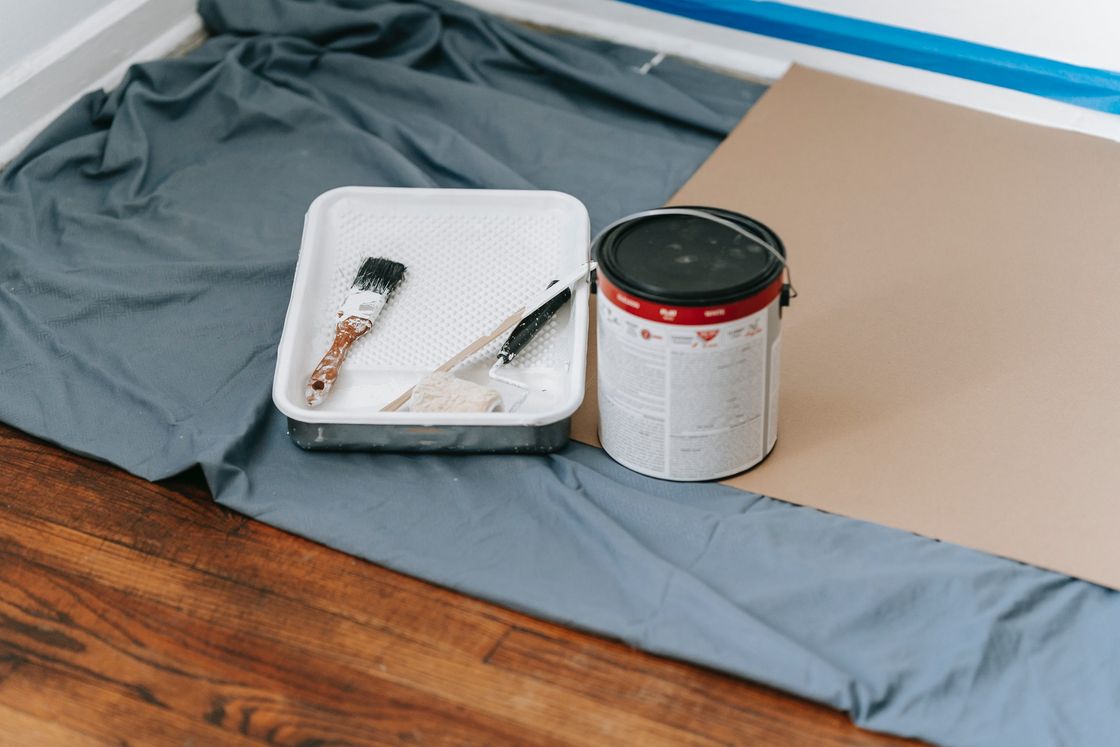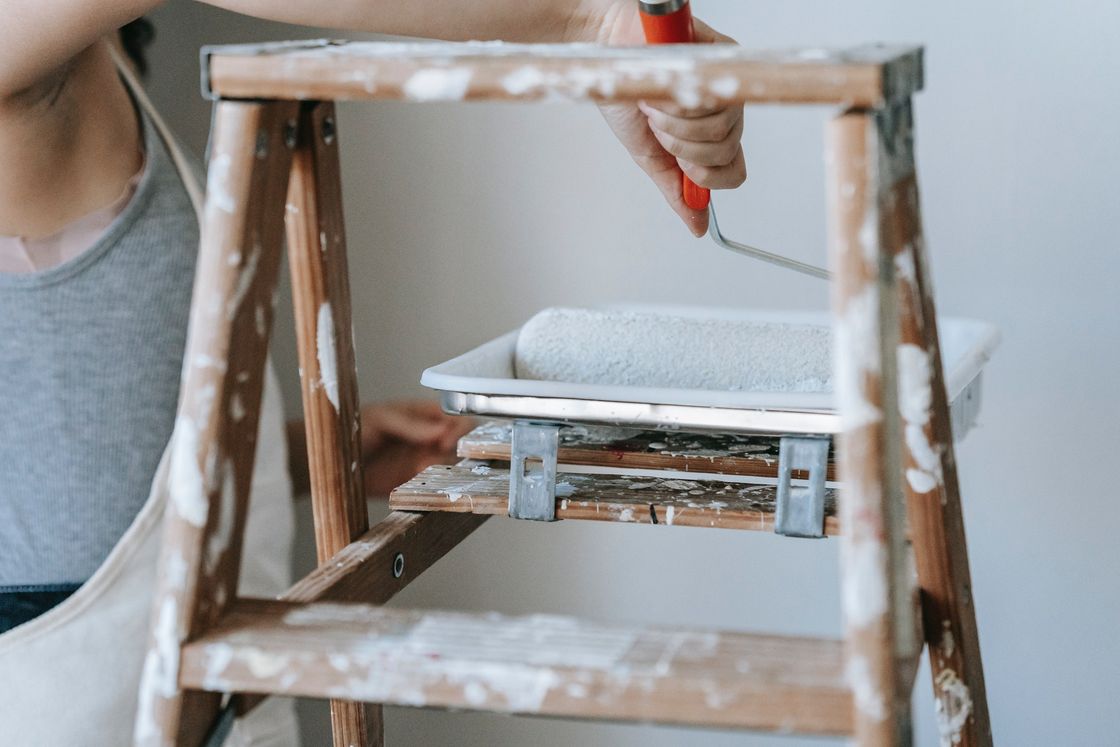Index
Whether it's a single room or the entire house, painting your house yourself is one of those undertakings that we all embark on sooner or later. The problem is that, if you don't take certain precautions, you risk making more effort than necessary and making a mess that is difficult to recover from.
Don't worry, though: we at Casavo have collected in this guide the 9 fundamental steps to follow for DIY house painting.
1. Painting the house: the most suitable colors room by room
The first step to take is certainly that of choosing the colors to use to paint the house. Assuming that white is the wild card that always works, what can you opt for if you want to play with creativity?
Warm colors like red and orange are perfect in the kitchen and living room, because they energize and stimulate social interaction and conviviality. In the sleeping area, it's better to focus on shades of blue or green, which relax and promote sleep. When decorating the corridor, stick to a neutral dove gray, or dare to go with bright contrasts.
2. DIY paint for painting your home
For painting the interior walls of a home, water-based paints are usually used, which you can find in any DIY store.
The doubt that haunts the mind of those who are about to paint their house is: linked to the quantity of product to purchase. Calculating it is not complicated: just multiply the base by the height of each wall to be painted (including the ceiling), then subtract the surface area of doors and windows. Finally, multiply by two - you'll soon understand why. Simple, right?
3. What to buy to paint your house
In addition to paint, before painting your house you need to get a series of other items. The essentials are definitely rollers, brushes and smaller brushes for finishing touches. But you will also need a ladder, a bucket with some of water, a wooden stick to mix the paint, and a rag to clean up any smudges before they dry.

4. How to prepare your home before painting
Starting painting without first properly arranging the room is one of the most common mistakes. To avoid it, follow this short list:
- clear the walls as much as possible, removing pictures and shelves;
- if necessary, eliminate any mold on the walls and apply an anti-mold base if the room is very humid;
- fill any holes or cracks, then sand the surface with sandpaper and remove the dust with a cloth;
- gather the furniture in the center of the room and cover it with plastic sheeting;
- remove the plates covering the electrical outlets and secure them by covering them with electrical tape;
- protect the floor with cardboard or old newspapers;
- also cover the baseboards and door and window jambs well with tape and plastic.
Once this is done, you can move on to the next step.
5. And how do you prepare yourself?
Another thing to do before starting to paint your house is to prepare yourself—and not just furniture and fixtures.
We suggest you wear work clothes, and perhaps even a protective suit made of non-woven fabric with shoe covers. Protect your hands with disposable latex gloves and, especially if you work in a closed environment, wear a mask. Finally, cover your hair with a hood or cap to avoid getting it dirty: the paint doesn't wash off easily!
6. How to Paint Walls with a Roller
The roller could be considered the best friend of those who want to paint their house themselves. This tool, in fact, makes everything easier and less tiring, even when working on large surfaces.
You just dip it in the paint and let the excess color drip off (there are also special grids for this), then pass it over the wall from bottom to top repeatedly, moving sideways as you go. Precision is not important, especially at the beginning: the only thing to pay attention to is the thickness of the paint. Always go over the paint with the roller only on the still-wet paint.

7. Painting techniques for the walls of your home
Speaking of technical matters: we would love to tell you that you can paint all the walls using only the roller, but unfortunately it is not possible. so. Before using it to "fill" the entire surface, in fact, it is good practice to focus on the most delicate points. Therefore, you do not start from the center, but from the corners between the walls and the outlines of window frames, shelves, chandeliers and ceiling lights.
Once this is done, you can paint the rest of the walls, remembering to start from the ceiling and taking care to complete one section at a time to ensure a uniform result. Finally, take the brush back in hand and proceed with any finishing touches that may be necessary here and there.
8. When should you paint your house?
You probably already know that one coat of paint isn't enough, especially if you're changing the color of the walls. However, to be able to apply the second coat, it's essential that the first is completely dry. That's why we recommend painting your house in spring or summer: if you plan well and are lucky, in these seasons you can even manage to finish the job in a single day, working early in the morning and late in the afternoon.
9. Interior Wall Painting: Trendy Ideas
If you haven't yet chosen the colors to use to paint your home and are looking for inspiration, you can be tempted by the 2022 trends.
Interior design magazines teach us that this is the year of strong and intense colors. Starting with the bold and modern Very Peri, chosen by Pantone as the “Color of the Year” for 2022, moving from fresh pastel colors, to olive green or blue that recall natural tones. If you're worried about making too drastic a choice, use the color on a single wall and combine it with neutral tones and a minimalist style in the rest of the room: the final impact is guaranteed!
Are you still looking for the right home to paint to your liking? Explore the listings on the Casavo platform: the house you imagine could be hiding right there.






